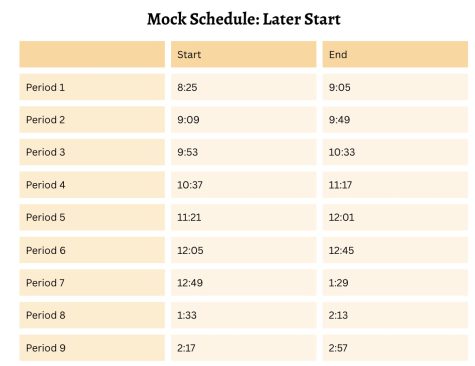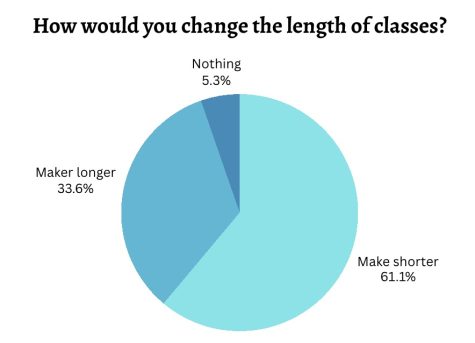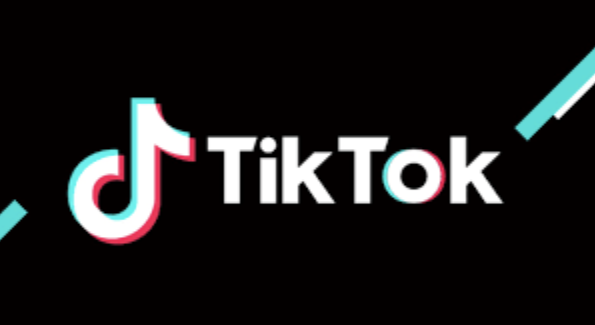Scheduling Crisis: Bergen County’s Outlier
Do you always feel tired or unproductive? Lacking motivation? Constantly taking naps after school? Well you might not be to blame, it might just be the product of Cresskill High School’s faulty schedule.
We start horrifyingly early at 7:40AM, making most high schoolers wake up anytime from 6:00 – 6:45AM. Then we’re stuck in school until 3PM, but lots of students don’t even leave school grounds until around 5 – 7 PM due to extracurriculars.
CHS runs on a standard schedule with the same number of periods every day, the same classes in each period, and the same time allocated to each class. 45-minute periods, with 4 minutes in between. That itself seems fine, but when we have a whopping 9 periods per day, the time adds up and it takes a toll on the students and even teachers.

A majority of students feel they are most productive in the middle of the day, or from Periods 4 – 6 (10:10AM – 12:30PM), and most teachers agree their students are most productive during these periods. This is probably because earlier in the day, students haven’t fully woken up yet, so it is hard for them to immediately jump into work.
With the current schedule, Senior Nina Toups “wakes up at 6:15AM. I drive [from] 7:20AM to 7:25AM.” Furthermore, Nina says her brain starts to wake up at Period 5, which starts at 10:59AM. One high school teacher described that he is more productive after lunch compared to the morning because in the morning, “students are generally tired and incapable of giving me their full focus so I have to go at their pace.”
Another reason for their productivity is that Periods 4 – 6 are before the students lose energy in the later classes due to putting in their best effort for so long beforehand. Less than 10% of teachers said that students were most productive Periods 7 – 9, for this reason exactly.
Additionally, student life has become increasingly unbalanced, with school taking up a majority of kids’ time. We are given homework by almost all teachers every day, and though it is for our benefit, it adds onto the already long days at school. Teenagers are recommended 8 – 10 hours of sleep, and most do not even hit the minimum. It’s inevitable that the lack of sleep affects our focus in school, and therefore our performance, grades, and overall wellbeing.

The desire for change doesn’t stop at us; the vast majority of students (84%) and teachers (87%) agree that the school day is too long.
One possible solution is to shorten the length of the school day by starting later and slightly reducing class time to end school at the same time, which 76.1% of students support. Below is a mock schedule with school starting around 8:25AM and each class class lasting 40 minutes, with 4 minutes in between classes. 
Additionally, morning classes will be later, allowing students to fully wake up before attending rigorous classes. Starting later and ending at the same time provides students with extra sleep, so they can make better use of their time in class. Since students would be more productive in class, it makes up for the lost 5 minutes each class. School would end only 3 minutes earlier at 2:57PM, so extracurricular activities won’t be affected.

Another option to reduce the school day is to start earlier and end earlier. However, that means that extracurriculars would have to be rescheduled as school would end 45 minutes earlier. Furthermore, most of the complaints with the current schedule is school starting too early. While shortening the length of the school day will make some students satisfied, it doesn’t address the issue of student’s low productivity in the morning. Regardless of when we would start and end, 61% of students support shortening each class period.
A possible weakness in both these options is that with shorter class times comes less time for assessments. Some classes have tests which take the full 45 minutes, and even 5 minutes shorter may hurt the students. Teachers could reasonably get around this by slightly shortening the tests, or giving more frequent but shorter assessments.
Lastly, a solution that other schools in Bergen County already have, is a block schedule. Block schedules allow students to attend some of their classes each day, as opposed to all 7 or 8 in one day. These classes typically last from 50 – 90 minutes and work on rotation.
NVD and Northern Highlands Regional High school both use a rotating block schedule with classes lasting about 55 minutes. They start at relatively the same time as Cresskill, but end at 2:36PM. Cresskill High School students are in school for 30 minutes more each day but for no noticeable benefit.
Blocking is in direct correlation with increased focus and reduced stress. Longer class time allows students to engage with the course material deeper and teachers could expand their lesson plans to further elaborate on topics, or simply fit more material in one day. Moreover, block scheduling can help ease student’s anxiety and stress. Some may find it challenging to keep up with all their classes the entire week because teachers assign homework every day. Block scheduling does not necessarily minimize the homework, but rather would give them an opportunity to slow down and focus on each subject.
Junior Rachel Goldman was opportune enough to experience this system in Tenafly High School. The school either starts at 8:10AM or 8:30AM, depending on the block schedule day, and always ends at 3:11PM. Students have 6 out of her 8 classes a day, and each class is about 50 minutes long. Rachel found this more beneficial to her work ethic. She feels that it is difficult to spend enough time on every class, since she has each one every single day. Recalling her time in Tenafly, she found it helpful to have more class time with less overall classes per day.
Rachel strongly recommends Cresskill switch over to this system: “Because I only had those classes [portion of courses] on a rotating basis, I would not have to worry about assessments. It gave me breaks to do homework and study for upcoming tests.”
In fact, its flexibility is another benefit of block scheduling. Cresskill’s Board of Education can choose what standards the classes follow, in terms of time and how many days the rotation lasts. In order to establish the best teacher and student relationships, students require sufficient time in class to allow for a deeper understanding of the lessons and time off from other classes to fully utilize their free time towards their studies.
But despite all these advantages, the block schedule still has many drawbacks. First of all, it would be difficult to schedule classes to align with Cresskill’s three different lunch periods. Periods 5, 6, and 7 would need to be every day. Furthermore, AP Sciences have lab periods, which might be difficult to coordinate. Lastly, an hour in a class more centered around note-taking like AP Calculus might fatigue the students and lower their attention.
Adopting a change in the school’s schedule is a major task, but supporting students’ health and performance is worth any effort. The block schedule and reduced time do have flaws and may not be the perfect fit for each individual student. However, the current system will continue to hold negative effects on the motivation and productivity of both students and teachers until the issue is addressed.
Your donation will support the student journalists of Cresskill High School. Your contribution will allow us to purchase equipment and cover our annual website hosting costs.












